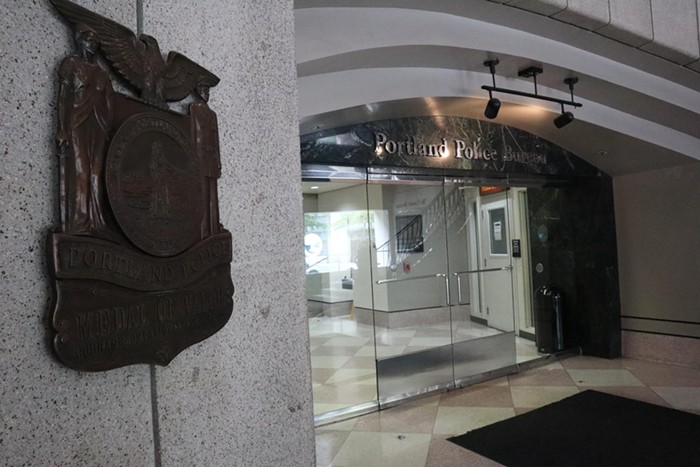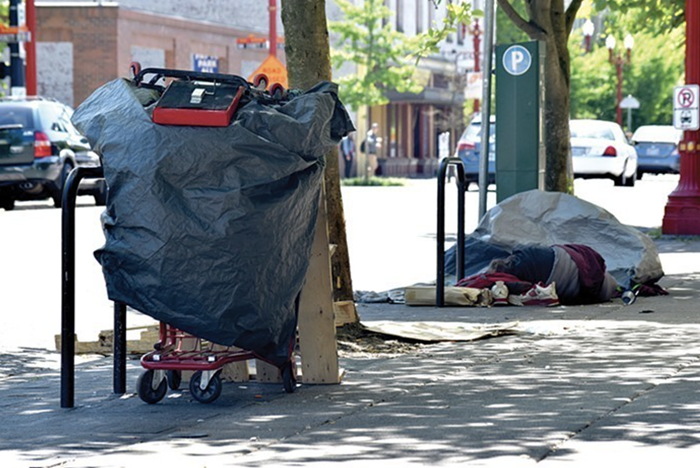The Good News
On Being Gay Parents in a World That Needs to Meet More Gay Parents
The Mean Mom Olympics
Adventures with Moms Who Bully, Hate, and Compete
Build A Better Parent
Making Parent Friends
Ask the Parent!
“Get Out of Our Bed!”
Cracking The Code
The Steep Price of Public School Dress Codes
If You Feed Them, They Will Eat
Don’t Let Picky Eaters Drive You Nuts
“It’s teaching girls that their bodies are more sexual than boys’ and they don’t deserve respect if their skin is showing. It’s sending a message to boys it’s acceptable to misbehave or disrespect a girl if they can see her skin.”—Irvington K-8 seventh grader: public comment to PPS School Board 5/26/2015
School dress codes are becoming more and more of an issue in the educational system, and Portland is no exception. This past spring a number of seventh and eighth grade girls in Portland Public Schools (PPS) were removed from class—mostly for wearing tank tops, or shorts that did not extend past their fingertips when their arms were at their sides. Often these “dresscoded” girls had to wait in the school office until a parent could bring a change of clothes.
Of course, Portland is not the only place with this issue. This spring as temperatures rose, girls around the country—ranging from a Texas kindergartener to an Idaho graduating senior—were punished for wearing sundresses, skirts deemed too short, and other perceived violations. In several places middle and high school girls have been protesting dress code enforcement on social media or through various forms of civil disobedience.
And while dress code “problems” may not top the list of maladies facing our educational system, there are definite and lasting implications to students—especially young women, who sometimes lose substantial class time waiting for a parent to bring new clothes. These girls may also experience shame, embarrassment, and become an object of bullying from their classmates. Dress codes can also send a message that a girl’s appearance and/or body is a “distraction” for boys, perhaps even fostering the idea it’s more important for the school to police her body than provide an education.
Boys are sometimes asked to pull up their pants or not wear T-shirts depicting drug use, violence or profanity—but girls (as well as gender non-conforming students and students of color) are more often the targets of dress code enforcement. These rules shift the blame, sending boys the message that self-control and respectful treatment of girls aren’t as important as the “distractions” they allegedly cause.
Portland Public Schools has a district-wide dress code, but individual schools have considerable discretion to expand or enforce these rules. Enforcement can be inconsistent, as are the accompanying messages. Some girls I spoke to said teachers had actually cautioned the students that their attire and bodies could be “distracting” or even justify harassment or attack. Several students testified at the May 2015 PPS School Board meeting on the subject, and the Board has agreed to discuss revising the dress code with students, parents, and community groups.
What Goes Into an Egalitarian Dress Code?
So if we agree that public schools, including PPS, should adopt dress codes that are egalitarian across race and gender lines—then what? A serious conversation about dress codes could be tough. I’ve been in social media discussions where high school teachers and parents claim some teens use dress code specifically to test limits. People feel strongly about the subject, whether they advocate for uniforms or no dress code at all.
Part of the challenge is that reforming the dress code alone isn’t enough. To change the underlying culture, PPS would also need to train staff district-wide on consistent implementation and enforcement. This means somehow coming to a baseline understanding of why we have dress codes in the first place.
One way of looking at the issue is by treating school as the student’s “job,” teaching students to dress for the office—not a party. This approach was written about by parenting author Melissa Atkins Wardy in the popular article “Don’t Wear Saturday on a Wednesday.” She argues it’s possible to teach young people that respect for their environment and taking ownership of personal behavior includes proper attire—without sexually shaming girls or giving boys a pass for harassment.
Complicating matters is the fact we may not share common definitions of seemingly neutral words. Non-gendered language like “appropriate for learning” or “dress for your job” still contains implicit value judgments about class, race, and sexuality. In a 2014 article on bias and power in dress code, Rosalind Wiseman outlines some common dress code principles:
•Sets a standard for students that learning environments should be given respect and prepares them for a professional environment as adults.
•Contributes to students’ self-respect.
•Decreases materialism and social competition.
•Stops children from wearing clothes that are offensive or promote illegal or unhealthy substances like drugs and alcohol.
•Contributes to school spirit and unity.
Wiseman critiques the ways these guidelines are used to target marginalized groups, or are applied in culturally insensitive ways. (And I have to wonder, are “contributing to” “school spirit and unity” and “self-respect” objective enough to be enforced consistently?)
Dress codes should minimize disruptions to the educational environment. But should they also convey messages about moral values and sexuality (and societal anxiety about young women’s sexuality in particular)? Suppose we say safety, hygiene, and discipline are the only concerns? Would that mean prohibiting only hats (with accommodations for religious headgear), shoes that slide off, and clothing depicting images of violence, exposed genitals, drug use, or discriminatory intimidation?
Dress codes should minimize disruptions to the educational environment. But should they also convey messages about moral values and sexuality?
Theoretically students could wear halter tops, swimwear, or any number of “immodest” or blatantly “inappropriate” clothing items. Even if the rules were “no transparent garments, visible undergarments, or displaying the midriff, nipples, or buttocks,” students would have a lot of leeway. But if an adult is not managing student attire (and behavior) at home, how much do we want a school to substitute its value judgments? Particularly if the school’s judgment results in everyone being expected to dress like a middle class, white, heterosexual adult?
These are not easy questions. Arriving at consensus for a PPS code may be challenging, but hopefully all the stakeholders are committed to thoughtful, considered dialogue. In any event, the code and enforcement mechanisms now in place are not working.
Elleanor Chin is a writer and litigation consultant living in Portland. Her writing appears in BlueOregon, SecondNexus.com, Feministing, and other places. She blogs about culture and creativity at ragecreationjoy.wordpress.com. She is on the Board of the Oregon Chapter of the National Organization for Women. Oregon NOW is among the groups working to reform the Portland Public School Dress Code. Opinions above are Elleanor’s and also reflect the position of Oregon NOW, but otherwise are not those of any other organization or individual.













